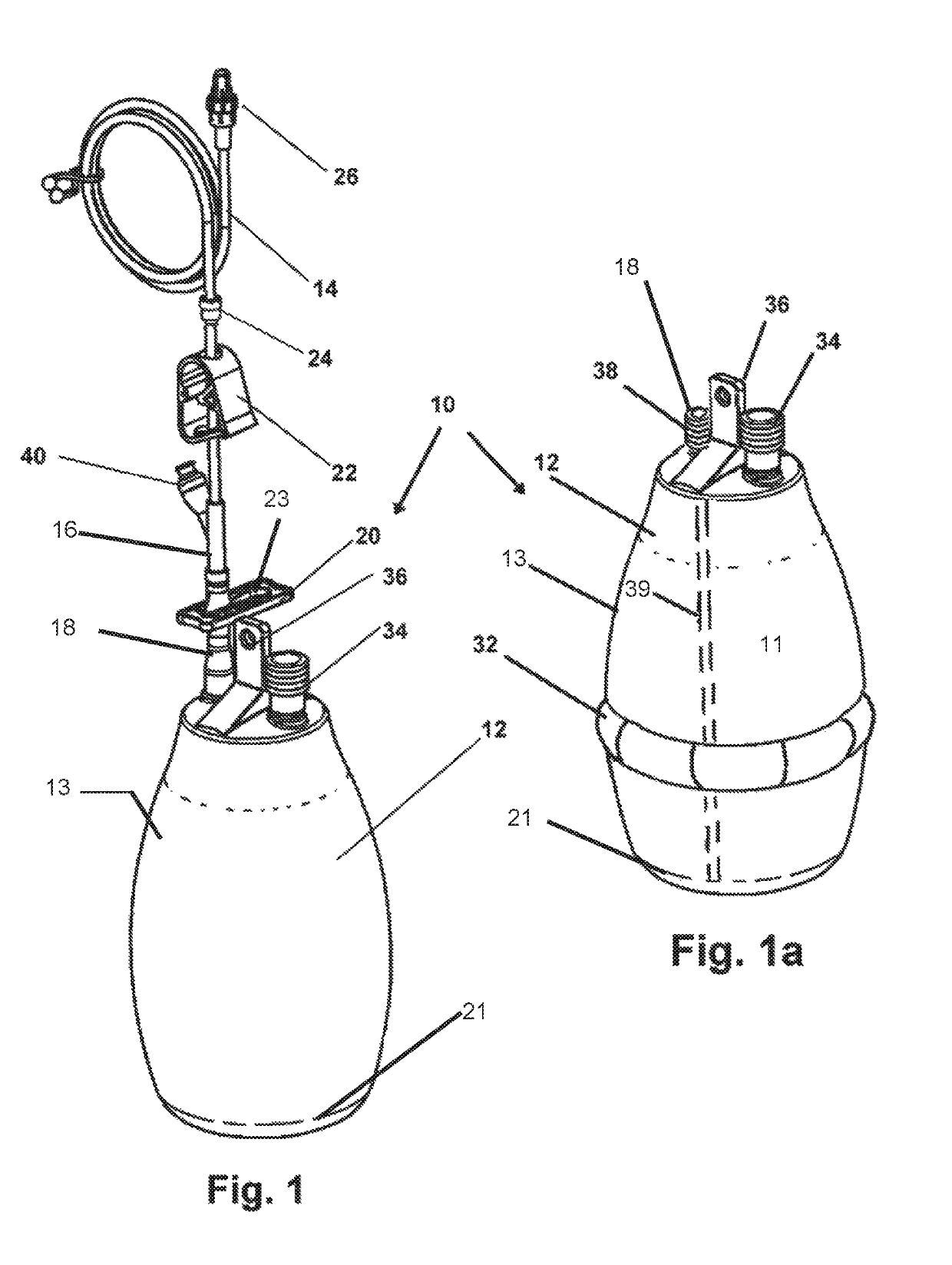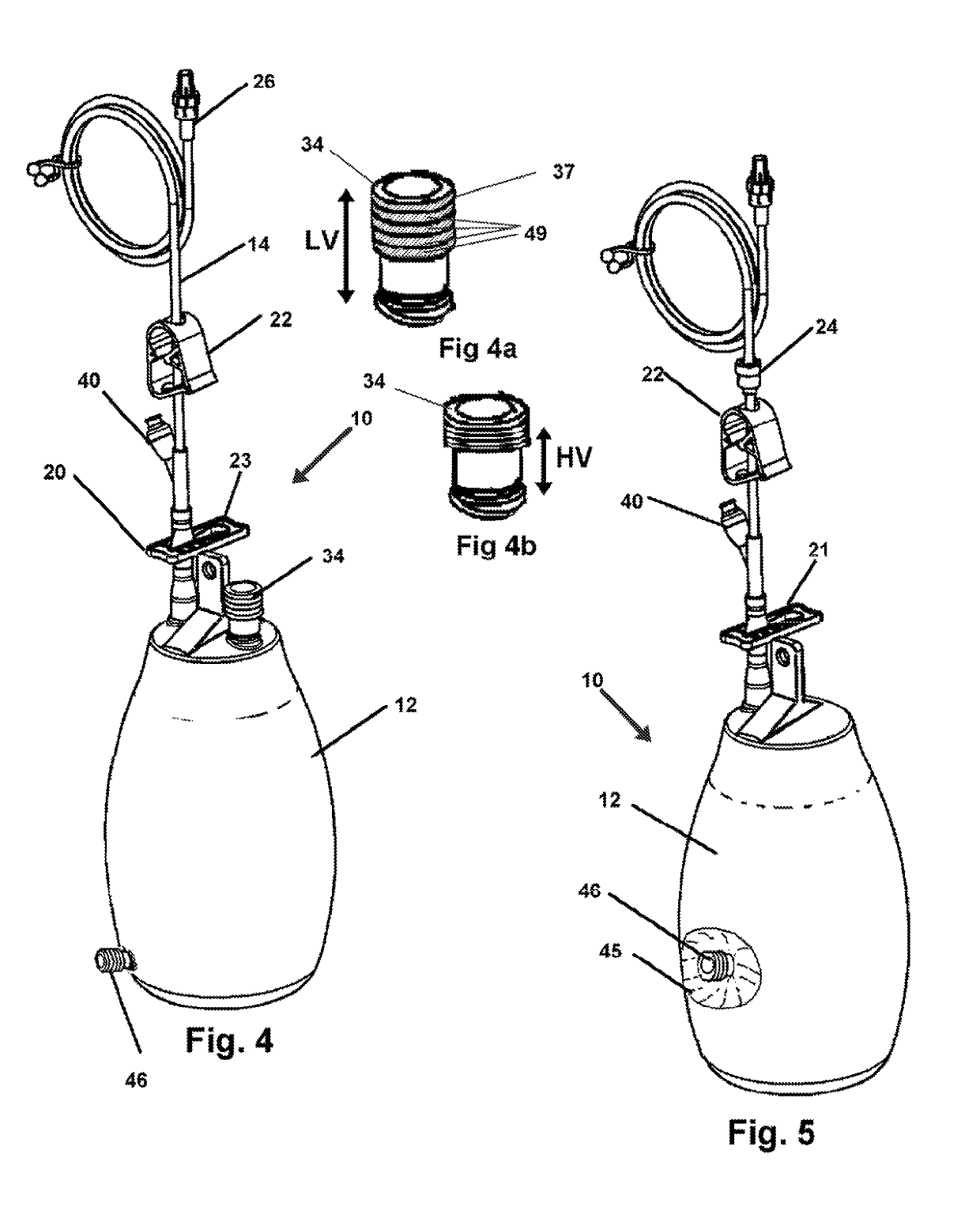Drainage system for wounds
a wound and drainage system technology, applied in the field of wound drainage systems, can solve the problems of easy breakage, preferred treatment mode, and inability to withstand the force of glass containers, so as to prevent accidental leakage of vacuum, prevent accidental spillage, and ensure structural integrity and rigidity
- Summary
- Abstract
- Description
- Claims
- Application Information
AI Technical Summary
Benefits of technology
Problems solved by technology
Method used
Image
Examples
Embodiment Construction
[0043]In this description, the directional prepositions of up, upwardly, down, downwardly, front, back, top, upper, bottom, lower, left, right and other such terms refer to the device as it is oriented and appears in the drawings and are used for convenience only; they are not intended to be limiting or to imply that the device has to be used or positioned in any particular orientation.
[0044]Now referring to drawings in FIGS. 1-6, wherein similar components are identified by like reference numerals, there is seen in FIG. 1, the device 10 which provides a vacuum drainage container 12 configured for an engagement with a the tube 14 or catheter at a first end in a sealed engagement. So engaged the container 12 provides for communication with the vacuum in the interior cavity of the container 12 and at a second or distal end to provide suction to the drainage conduit from the patient.
[0045]A Y-connector 16 bifurcates the tube 14 which is in sealed communication with the inlet 18 connect...
PUM
 Login to view more
Login to view more Abstract
Description
Claims
Application Information
 Login to view more
Login to view more - R&D Engineer
- R&D Manager
- IP Professional
- Industry Leading Data Capabilities
- Powerful AI technology
- Patent DNA Extraction
Browse by: Latest US Patents, China's latest patents, Technical Efficacy Thesaurus, Application Domain, Technology Topic.
© 2024 PatSnap. All rights reserved.Legal|Privacy policy|Modern Slavery Act Transparency Statement|Sitemap



